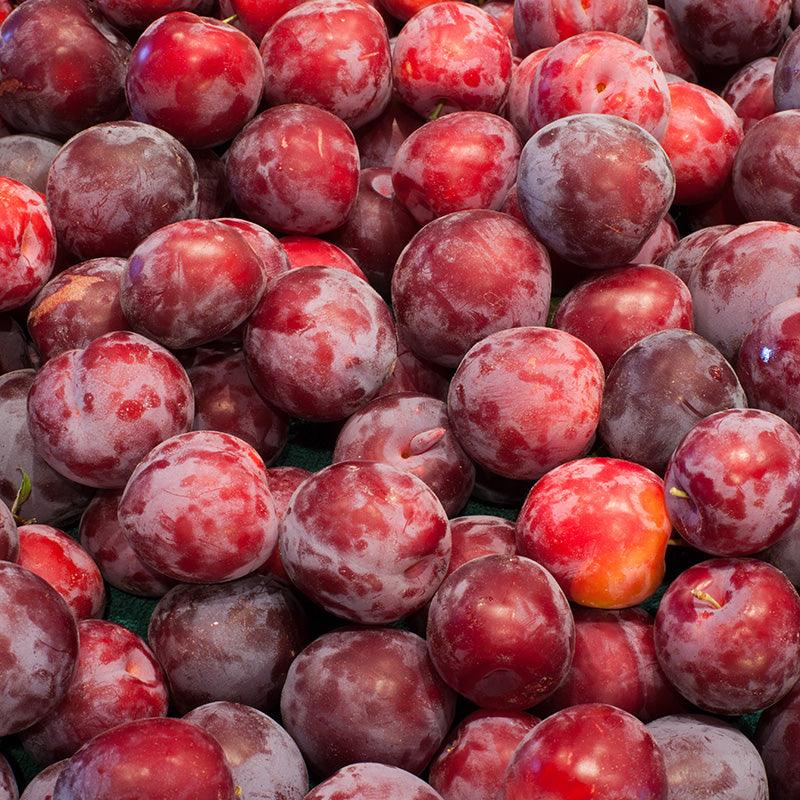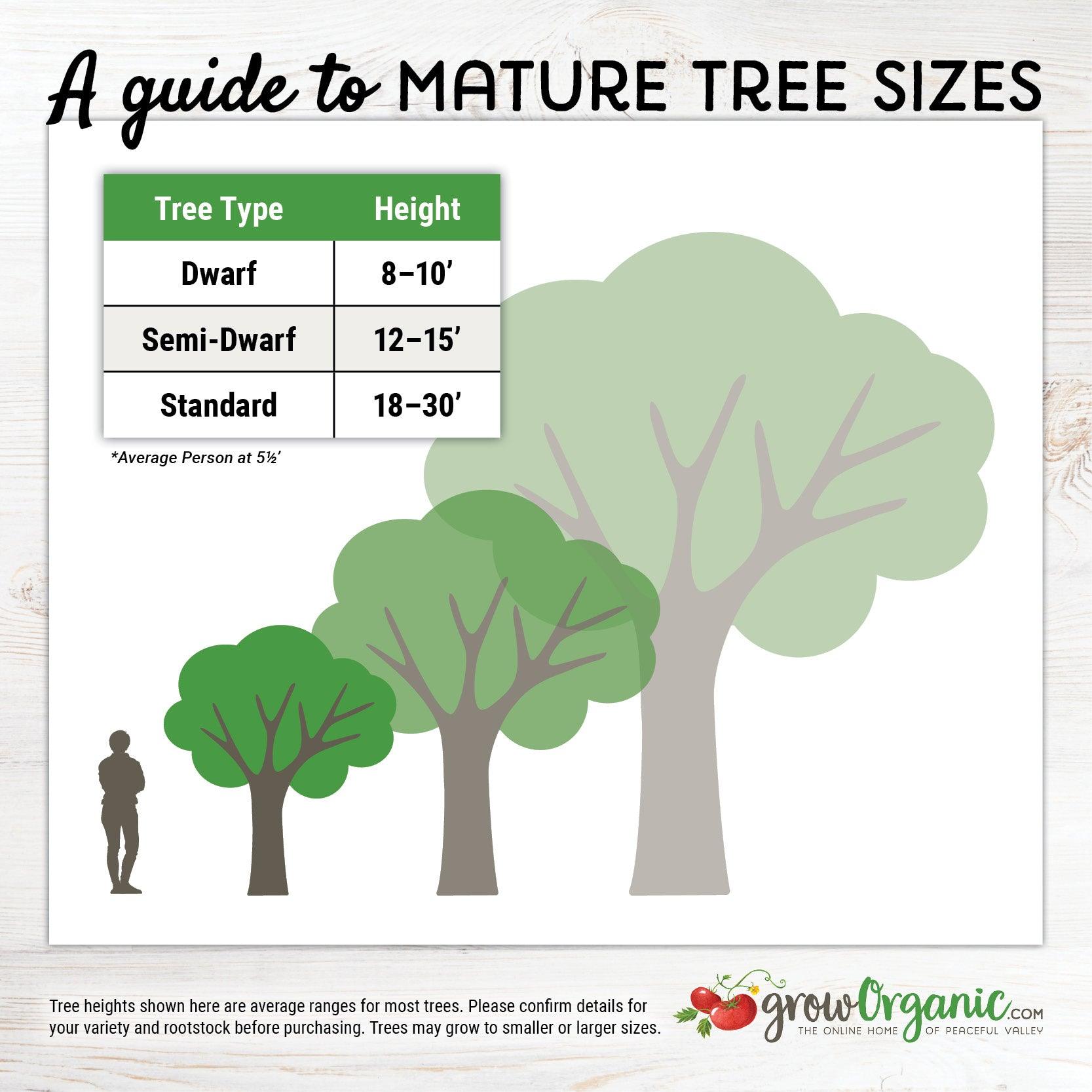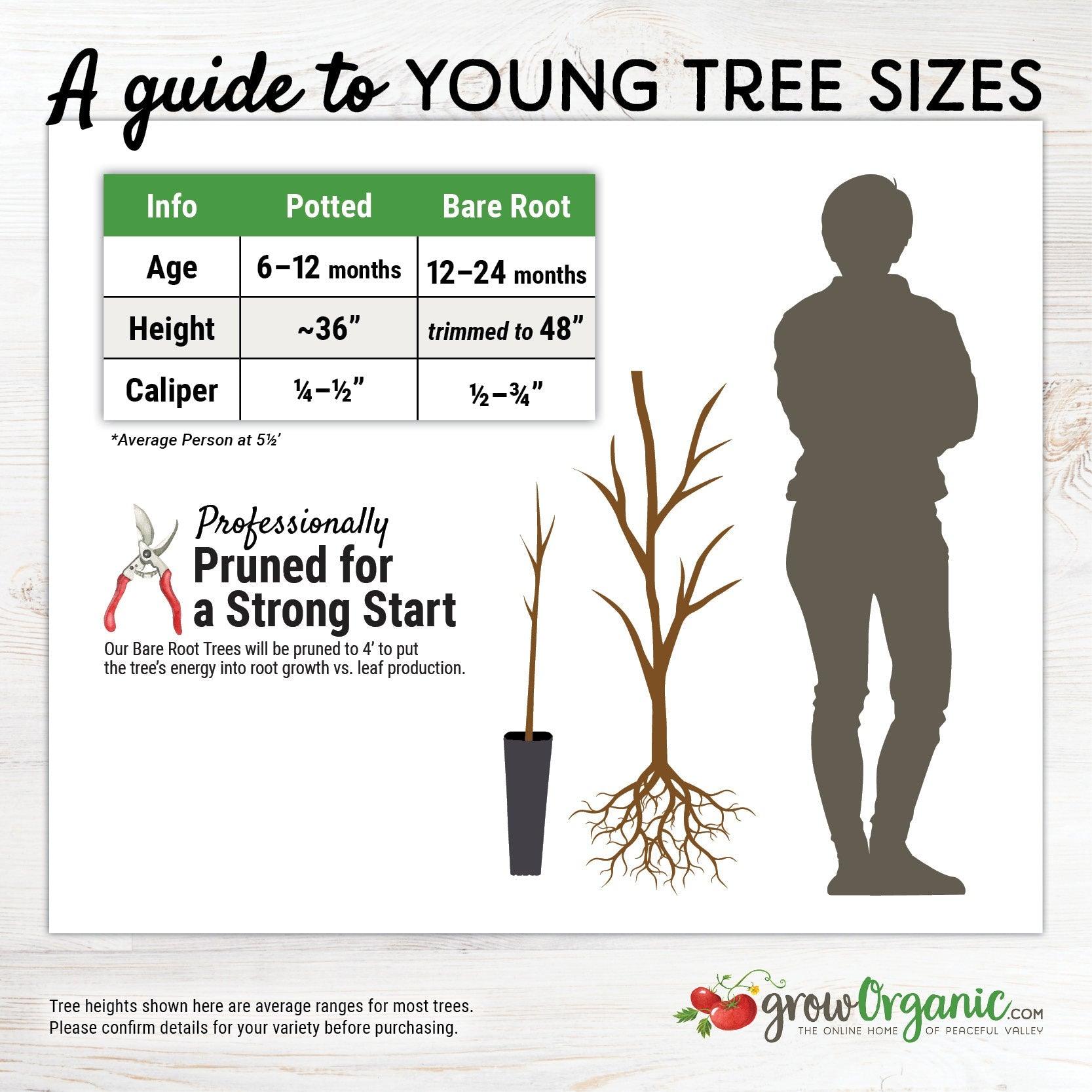Item Number: FT201
Santa Rosa Plum Tree
Classic plums with tangy sweetness.
Santa Rosa plum trees are a classic variety known for their medium-sized fruit with red-purple skin and golden-red flesh. These plums offer a perfect balance of sweet and tangy flavors, making them excellent for fresh eating, baking, and preserves. This self-fruitful variety thrives in sunny, well-draining soil and requires moderate chill hours, making it a reliable choice for many climates. Santa Rosa trees bloom in spring with fragrant white flowers, adding ornamental appeal. With its exceptional flavor and versatility, Santa Rosa remains one of the most popular plum varieties for home orchards.
Semi-Dwarf on Citation rootstock.
- Zones: 5-9
- Chill hours: 300
- Harvest: July-August
- Looks: Medium to large plums with red-streaked amber freestone flesh underneath dark reddish-purple skin.
- Personality: Juicy, tangy, flavorful.
- Facts of note: Santa Rosa produces beautiful, large, red fruit with amber flesh tinted red. This big producer, from the world famous hybridizer Luther Burbank bears what some would consider the standard for all other plums. These sweet plums with just the right amount of acid when fully ripe are delicious for eating fresh or for canning, drying or cooking. The fruit is juicy and provides a balanced blend of sweet and tart. The tree is vigorous, easy-to-grow, and a good choice for a wide range of climates. Though fully self fruitful in zone 9 it is partially self fruitful in most other zones and will return a much larger crop with a pollinator. Originates from Santa Rosa, California in 1906.
- Pollination: Self-fruitful and a good pollinator for other Japanese plums.
Introduction to Santa Rosa Plum Trees
The Santa Rosa Plum Tree (Prunus salicina) is an exceptional choice for orchards, particularly in Zones 5-9, spanning California, Arizona, and other regions with similar climates. With its origin tracing back to California in 1906, this tree offers large, red plums boasting amber-hued, red-streaked flesh beneath a dark reddish-purple skin.
Cultivation Requirements
Chill Hours: Requiring around 300-400 chill hours, this tree flourishes during the colder seasons.
Harvest Time: Expect bountiful yields in July to August, offering medium to large-sized plums.
Fruit Characteristics: The plums possess a tangy, juicy, and flavorful profile, striking a harmonious balance between sweet and tart notes.
Vigorous Growth: The Santa Rosa Plum Tree is known for its vigor, making it an easy-to-grow option for orchard enthusiasts.
Versatility: Its versatility shines as it caters to various uses. Enjoy these plums fresh, use them for canning, drying, or in various culinary creations.
Appearance and Taste
Visualize medium to large plums with an attractive dark reddish-purple skin concealing amber-hued flesh. The succulent fruit offers a blend of sweet and tart flavors, an impeccable balance that elevates any dish or makes for a delightful fresh snack.
Cultivation Tips
Self-Fruitfulness: While it's self-fruitful in Zone 9, it benefits significantly from cross-pollination in other zones, especially with other Japanese plum varieties. Consider it a key pollinator for similar species.
Adaptability: This tree adapts well to various climates, thriving in a range of conditions but flourishing best in moderate climates akin to its native origins.
Easy Maintenance: With its easy-to-grow nature, caring for the Santa Rosa Plum Tree involves routine orchard maintenance and occasional pruning for optimal growth and fruit production.
Enhancing Your Orchard with Santa Rosa Plum Trees
The Santa Rosa Plum Tree is not only a beautiful addition to any orchard but also a practical one. These plum trees produce fruit reliably and are cold hardy, making them suitable for diverse environments. Their early spring bloom features stunning white flowers, adding an ornamental touch before transitioning into fruit-bearing season. For optimal growth, plant these standard plum trees in full sun, ensuring they receive ample light to produce abundant, flavorful fruit.
By integrating Santa Rosa Plum Trees into your orchard, you can enjoy the benefits of a hardy, fruitful tree that enhances both the aesthetic and productive qualities of your landscape. Whether you are growing American plums or other varieties, the adaptability and robust nature of these trees make them an excellent choice for growers looking to expand their orchards with high-quality, delicious fruit.
Visit our Fruit Tree Central for a listing of all our fruit tree videos and articles.
Visit Tree Characteristics for a listing of all our fruit & nut tree growing characteristics.
For more information about different types of rootstocks and how they influence tree size and growth, see our Tree Rootstock Characteristics Chart.



Check Your Zone Compatibility:
Compatible with your zone.
Growing Zone for

Our Guarantee To You
Since 1976, we've served our customers at every stage of growing. Please contact us at any time. We are happy to support and assist you.
Shipping Information
Shipping Information
Cannot ship to the following states: HI, AK, PR, GU, VI
Shipping Weight: 5.0 lb
Dimensions: 47.5"L x 7.3"W x 2.75"H
Features
Features
- Flavor Pick
- Self-fruitful
- Suited to Warmer Climates
Characteristics
Characteristics
Planting & Care
Planting & Care
Useful Information
Useful Information
Guarantee
Guarantee
Limited Dormant Tree & Plant Guarantee
* Claim deadline is June 15th
We guarantee that your dormant tree or plant will arrive in good, viable condition. If your tree arrives in substandard condition, notify us within 3 days of delivery. Please email pictures of the box, inside packaging, the tree and its roots to helpdesk@groworganic.com. We will investigate your claim and process a request to exchange or refund the damaged product.
If your dormant tree or plant has not grown new leaves by June 15th, you may be eligible for our Limited Dormant Tree & Plant Guarantee. This guarantee provides for a store credit for the purchase price of the tree, excluding shipping. Please see the Instructions below.
Important Dates:
- April 1st Dormant trees/plants must be planted in the ground
- May 15th Perform scratch test, if no new leaves have grown
- June 15th Deadline to apply for a dormant tree/plant credit
All required documentation must be received by June 15th for your claim to be considered. Claims or documentation received after June 15th will be denied, without exception. Instructions listed below
Terms and Conditions
We cannot guarantee that your tree or plant will remain alive and healthy after it is received, or bear fruit as there are too many variables in your environment that are beyond our control (i.e. soil preparation, weed and pest control, proper irrigation, chill hours, compatible hardiness for your growing zone, proper choice of pollinator, extreme weather, rodent damage, disease, etc.).
We cannot guarantee that we will be able to provide a replacement tree/plant of the same species either that same growing season or in future years. Customers are responsible for all shipping fees associated with replacement trees and plants.
If we determine that the tree you purchased directly from us is not viable, we will issue you a store credit (not a refund) for the purchase price of the affected dormant tree or plant. Shipping is not included in the dormant tree/plant guarantee. Store credits can be used to purchase any product we sell and are valid for use only until July 1st of the following year.
Historically, 98% of our dormant trees and plants grow and thrive when they have been cared for and planted using our growing guides. Dormant trees and plants must be planted in the ground by April 1st in order to be eligible for credit. If the ground in your area is still frozen solid, you may temporarily plant your tree or plant in a pot.
Potted, non-dormant trees or plants are excluded from this guarantee as they are not dormant at the time of shipment. Evergreen trees such as citrus, avocado and olive trees are not available for credit under the Dormant Tree and Plant Guarantee.
Instructions
We guarantee that your dormant fruit tree or plant will leaf out, if you care for it according to our growing guides. In the unlikely event that your dormant tree or plant does not have leaves by May 15th, follow these simple steps to apply for a store credit:
Before you call or email, please perform a “scratch test” to determine if the tree or plant is still alive. This video shows how to check for live tissue under the bark. Scratch tests need to be done a few inches above and below the graft.
Green Cambium Layer / Living Trees
If the cambium layer under the bark is green, give your tree a little more time. It is still alive, but hasn’t come out of dormancy yet. Check to make sure that it is getting the right amount of deep root water, enough sunlight and that the weather is warm enough for that type of tree/plant to come out of dormancy. Every tree has its own personality and will come out of dormancy at different times. Be sure to submit the required documentation listed below by June 15th, if it doesn’t grow leaves.
Brown Cambium Layer / Dead Trees
If the scratch test shows a brown cambium layer or if your dormant tree/plant doesn’t have leaves by June 1st, please email us at helpdesk@groworganic.com. All required documentation listed below must be received by June 15th for your claim to be considered. To be considered for the guarantee claim, all required documentation must be received by June 15th. Incomplete submissions will be denied.
Required Documentation
- Order number
- Name of dormant tree/plant and the quantity affected
- Photos of each tree or plant showing:
- The roots (tree or plant must be pulled out of the ground)
- The scratch test areas
- The entire tree/plant
We reserve the right to not issue credit for items that have already been replaced. We also reserve the right to require photographic evidence that the tree/plant was not killed by root rot, rodent or mechanical damage.
Share

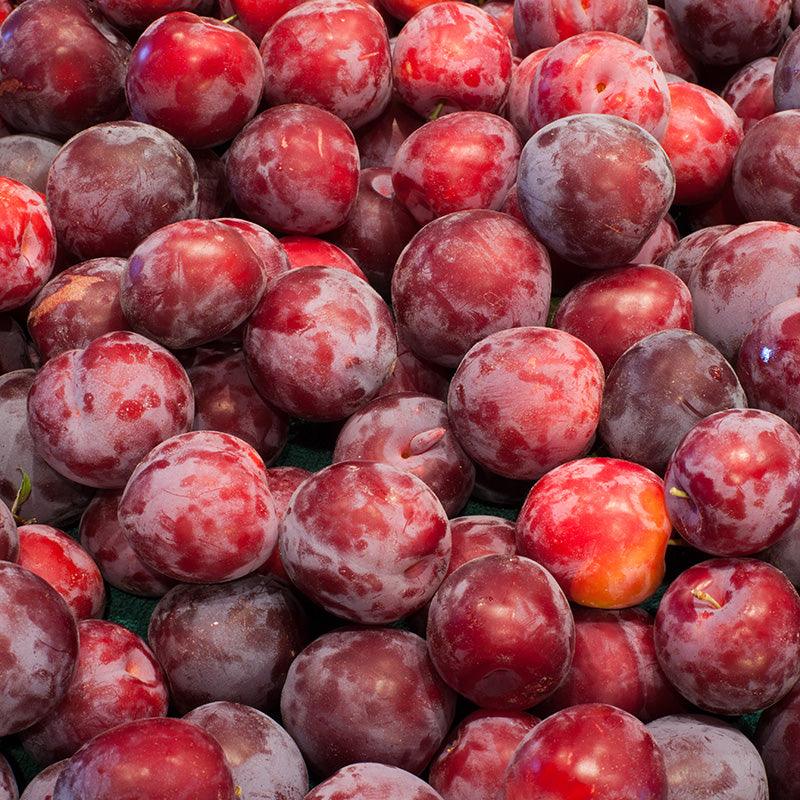
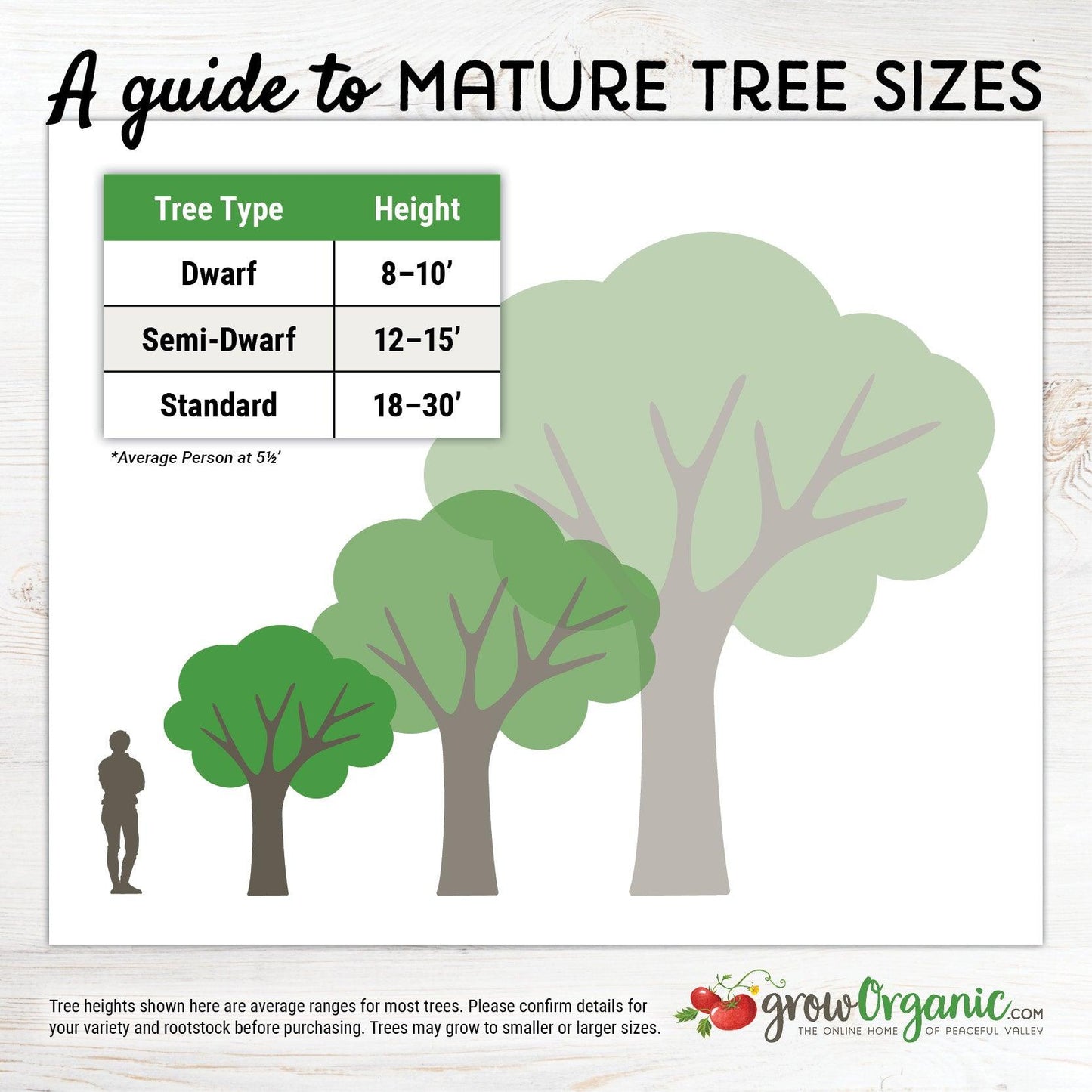
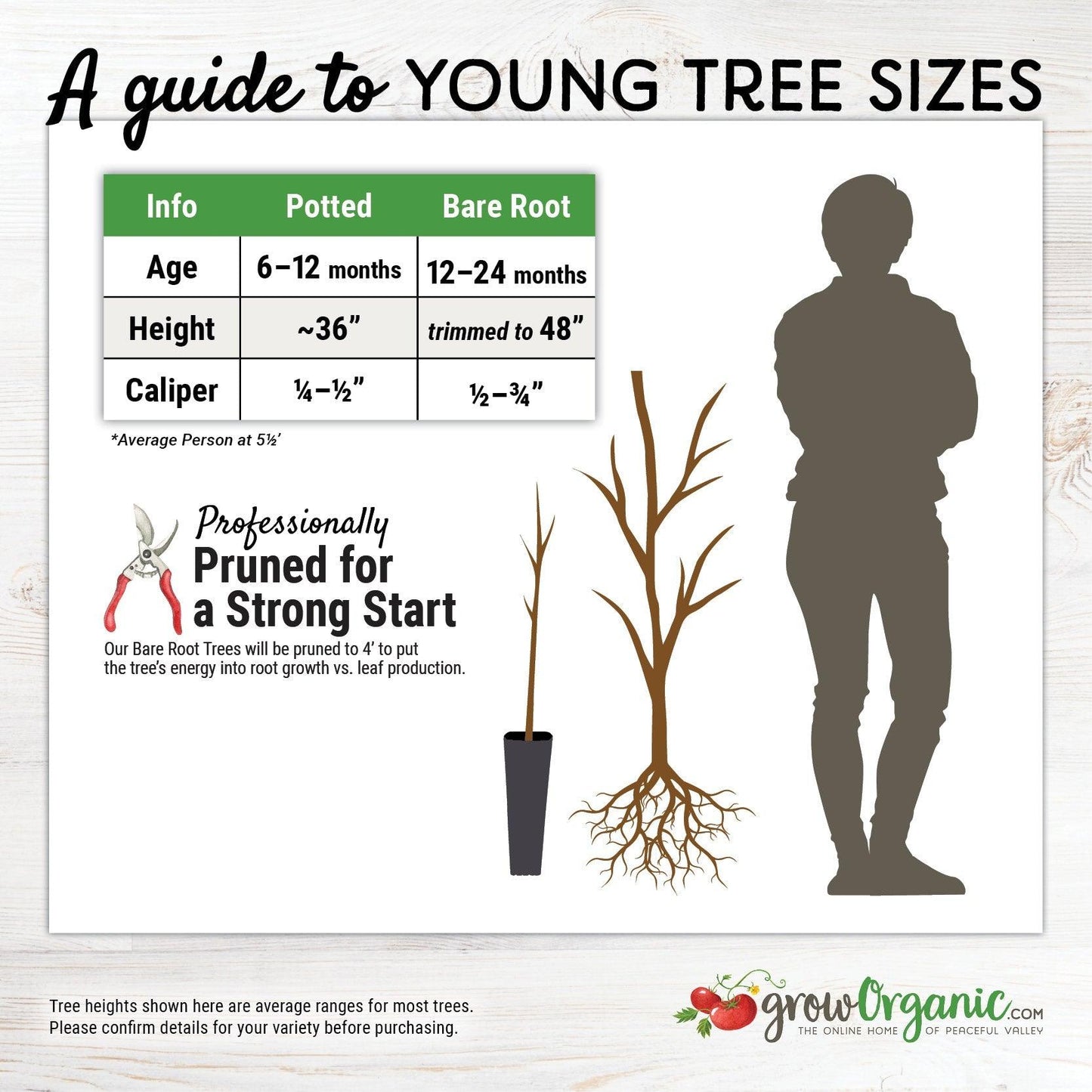
I have baby leaves already
Planted this earlier this year and it’s fully branched out with multiple main branches for me to chose the shape of the tree.
Growing very fast, very happy with the tree.
We received these 2021. They flowered last year and this year we can see fruit forming!! We cannot wait!
My Late Santa Rosas have come through their first winter in the ground very well. Nicely leafed out and lookking healthy. Roots and leaves really did their job last year.


